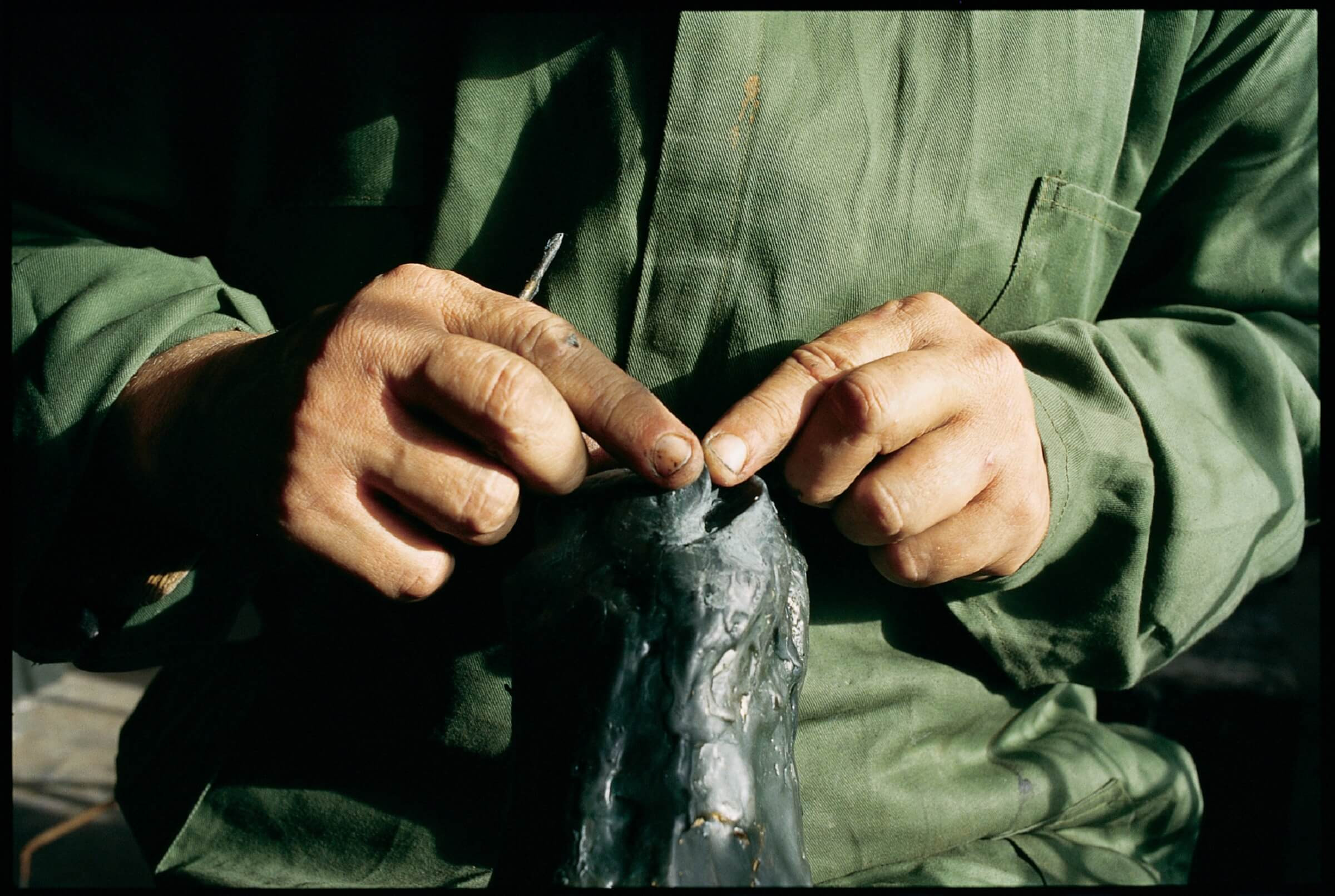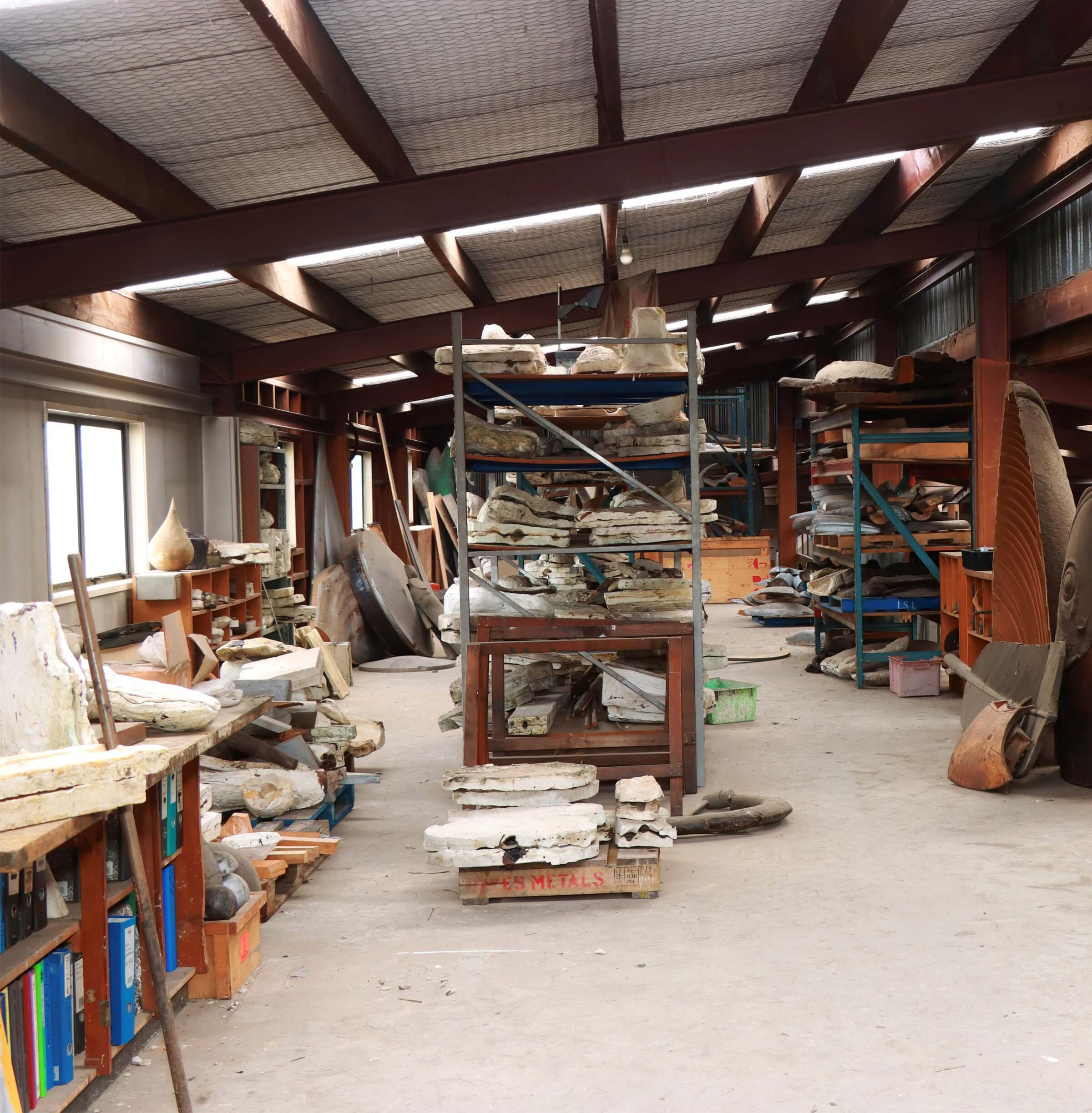Glossary
Glossary
Title
The title of each work is given in italics.
Sometimes Dibble changed the title of a work after its release; sometimes he used the same title multiple times for very different works. To avoid confusion, for these works the date is included as part of the title, but without italics.
When works in a series have the same title, the suffix ‘study’ is added.
When the title is the same for a small version of a large work, the suffix ‘model’ is added.
The historic usage of the numerals 1 or 2 following a work’s title is also applied in some cases.
Earlier or alternate titles are recorded in the additional notes section of the listing.
Where it appears no title was given, the work is labelled as ‘untitled’ with a description following in brackets.
Soft Geometric Titles
The Soft Geometrics have a distinct naming system, where the larger works share the number of their respective small models.
The titles of the Soft Geometric works were divided into three series based on the years they were made. The first, without the word “series” in the title, was devised in 2003. Series 2 was made in 2004 and series 3 in 2005.
The model sized pieces were numbered sequentially (for example from 2004: Soft Geometric series 2, model 1; Soft Geometric series 2, model 2 and so forth).
When a large work was based on the small model, it retained the title of the small work but without the word “model” and, sometimes, with a different date. So there exists a Soft Geometric model 8, 2003 and a large version of this form titled Soft Geometric 8, 2004. Only some of the models were scaled up, so not all numbers from the model series exist in large form.
Soft Geometrics produced much later, and with usually only one or two studies made in later years, do not use “series” in the title but instead have the year added onto the title.
Some of the Soft Geometrics were titled with alternate non-numerical titles and this is what is used in this catalogue in these situations. For example: Water’s Edge, 2006 and Water’s Edge model, 2005 were formally titled Soft Geometric series 2, study 26 and Soft Geometric series 2, model 26.
Repeated Use of Forms
Much of Dibble’s approach was a piecemeal construction of components, often interchanging elements that appear elsewhere. Thus, a particular form can be seen repeated in multiple studies. For example: the same huia form can be seen in the work Parallel Worlds model 1, 2010 and in the study Huia and Kowhai, 2017, but used in different configurations.
Date
The date given in the catalogue is the year in which the first work in the edition was released. Sometimes subsequent works in the edition were made a considerable number of years later. For this reason, sometimes the date inscribed on a work might not coincide with the catalogue date.
Dimensions
Dimensions are given in millimetres, height before width before depth.
Editions
While a number of Dibble works are unique (single edition) works, many works were made as limited editions.
For some editions, not every work potentially in that edition was made, so there are unfulfilled editions.
By intent Dibble’s works within an edition were often different. This included not just subtle changes of form but also conscious, obvious alterations (eg; with the addition of a branch, or the repositioning of an arm or leg).
Within an edition, works might be different colours, and dimensions might vary.
The inscription “A/p” positively identifies a work as the artist’s proof (first casting) within a proposed edition (but not every artist’s proof made by Dibble is inscribed A/p).
In a small number of cases a foundry poof was also made, when the artist wished to retain a work from the edition in the artist’s own collection for a time. These works are inscribed “F/p”.

Gallery Names
Over time galleries have often been rebranded or changed their names.
The catalogue records the name of the institution or gallery as it was at the time of exhibition or acquisition, of the artwork:
Aotearoa Art Fair (2021-): formerly Auckland Art Fair (2008-2020)
Aratoi Wairarapa Museum of Art and History (2002-): formerly known as Wairarapa Arts Centre (1969-1999)
Christchurch Art Gallery Te Puna o Waiwhetū (2003-): formerly known as the Robert McDougall Art Gallery (1932-2002)
Hastings City Art Gallery (2006-): formerly known as Hawke’s Bay Exhibitions Centre (1975-2006)
Toi Mahara (2022-): formerly known as Mahara Gallery (1996-2022)
Martin Browne Contemporary (2011-): formerly known as Martin Browne Fine Arts (1991-2011)
MTG Hawke’s Bay (2013-): formerly known as Hawke's Bay Museum & Art Gallery (2006-2013), Hawke's Bay Museum (1989-2006), and Hawke's Bay Art Gallery and Museum (1936-1989)
Te Manawa (1994-): formerly known as Manawatu Art Gallery (1959-1994)
Te Tuhi (2001-): formerly known as Fisher Gallery (1984-2001) and Pakuranga Community Art Centre (1975-1984)
Te Uru Waitakere Contemporary Gallery (2014-): formerly known as Lopdell House Gallery (1994-2014), Waitakere Arts and Cultural Center (1989-1994), and Waitemata City Arts Centre (1986-1989)
The Dowse Art Museum (1981-): formerly known as Dowse Art Gallery (1971-1981)
